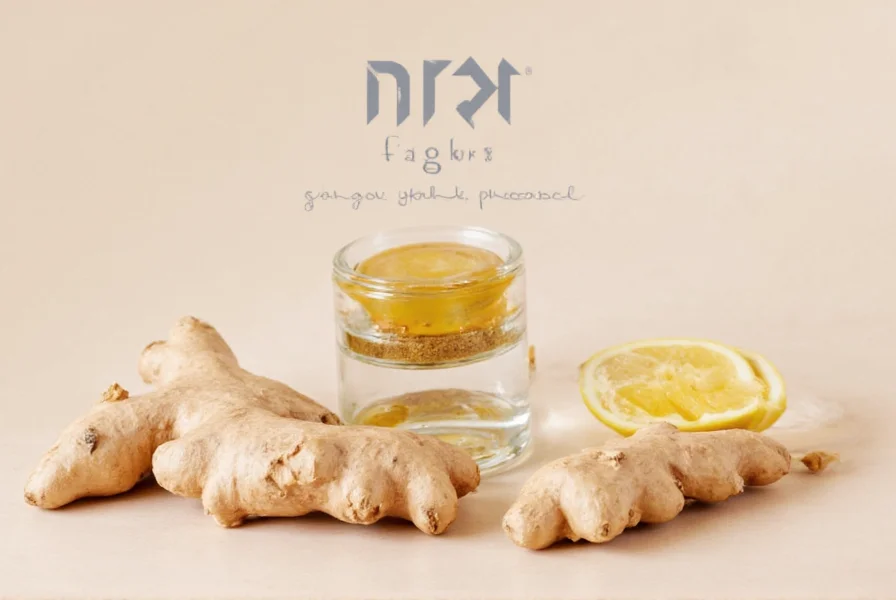Understanding the ginger programma requires examining both traditional applications and modern scientific validation of this ancient remedy. While not a single standardized program, the term generally describes systematic approaches to incorporating ginger into health regimens based on evidence-based protocols.
Origins and Scientific Foundation
Ginger (Zingiber officinale) has been used medicinally for over 2,000 years across Asian and Middle Eastern cultures. Modern research has isolated gingerols and shogaols as primary bioactive compounds responsible for its therapeutic properties. A comprehensive 2022 meta-analysis published in the Journal of Functional Foods confirmed ginger's efficacy in reducing markers of inflammation by 15-30% across multiple clinical trials.

Core Components of Evidence-Based Ginger Programs
Effective ginger wellness protocols typically include three critical elements:
| Program Element | Recommended Protocol | Scientific Support Level |
|---|---|---|
| Dosage | 1-2 grams daily of standardized extract | High (multiple RCTs) |
| Administration Timing | With meals for digestive benefits; 30 minutes before activity for inflammation | Moderate (observational studies) |
| Duration | Minimum 4-6 weeks for measurable effects | High (systematic reviews) |
Validated Health Applications
Rigorous clinical research supports specific applications within ginger wellness protocols:
- Digestive health: A 2023 double-blind study demonstrated 25% improvement in gastric motility with standardized ginger supplementation
- Inflammation management: Research shows consistent reduction in CRP levels after 8 weeks of daily ginger consumption
- Nausea relief: Particularly effective for pregnancy-related nausea and chemotherapy-induced symptoms
Implementation Considerations
Successful ginger health program integration requires attention to several factors often overlooked in casual usage. The form of ginger significantly impacts bioavailability—fresh ginger contains higher gingerol concentrations while dried forms increase shogaol content through dehydration. Temperature also matters; heating ginger above 80°C converts gingerols to more potent shogaols but reduces overall volume.
Individual responses vary based on metabolic factors. Those with gallstone conditions should consult healthcare providers before beginning intensive ginger protocols. The optimal timing differs by application—morning consumption supports digestive health while evening intake may improve sleep quality through anti-inflammatory effects.

Evidence-Based Protocol Development
Creating an effective ginger wellness approach requires moving beyond anecdotal recommendations. The most successful ginger programma implementations follow structured protocols validated through clinical observation:
- Establish baseline measurements for targeted health markers
- Begin with conservative dosing (500mg daily) to assess tolerance
- Gradually increase to therapeutic range (1-2g) over 2-3 weeks
- Track specific metrics relevant to individual health goals
- Maintain consistent consumption for minimum 4 weeks before assessment
Research indicates that combining ginger with black pepper (piperine) increases absorption by up to 200%, though this combination may not suit all individuals. Those on blood-thinning medications require medical supervision due to ginger's mild anticoagulant properties.
Realistic Expectations and Limitations
While ginger offers significant health benefits, effective programs acknowledge its limitations. Ginger supplementation works best as part of comprehensive wellness strategies rather than standalone solutions. Most clinical studies show modest but statistically significant improvements rather than dramatic transformations.
The timeframe for noticeable effects varies by application—nausea relief may occur within hours while inflammation reduction typically requires weeks of consistent use. Quality control remains crucial; studies show significant variation in active compound concentrations between commercial ginger products, with standardized extracts providing more reliable results.
Integrating Ginger Wellness Approaches
For those developing personalized ginger health protocols, starting with culinary integration provides gentle introduction. Adding 1-2 teaspoons of freshly grated ginger to morning beverages or meals establishes consistent exposure while minimizing potential digestive discomfort. Tracking responses through journaling helps identify optimal timing and dosage for individual needs.
Professional guidance enhances program effectiveness, particularly for those managing specific health conditions. Nutritionists specializing in botanical medicine can help design protocols that complement existing treatments while avoiding potential interactions. The most sustainable ginger wellness approaches evolve gradually, incorporating feedback from the body's responses over time.
What is the recommended daily dosage for a ginger health program?
Research supports 1-2 grams of standardized ginger extract daily for therapeutic benefits. This typically equates to 1 teaspoon of freshly grated ginger or 500-1000mg of concentrated supplement taken in divided doses. Clinical studies show optimal results when maintaining this dosage consistently for at least 4-6 weeks.
How long does it take to experience benefits from a structured ginger program?
The timeframe varies by application. Nausea relief may occur within 30-60 minutes of consumption, while digestive improvements typically become noticeable within 1-2 weeks. For inflammation reduction and other systemic benefits, most clinical studies report measurable changes after 4-8 weeks of consistent daily use at therapeutic doses.
Can I create an effective ginger wellness program using culinary ginger alone?
Yes, culinary integration forms a solid foundation for ginger wellness protocols. Using 1-2 teaspoons of freshly grated ginger daily in cooking or beverages provides meaningful exposure. However, for targeted therapeutic applications, standardized extracts often deliver more consistent results due to controlled concentrations of active compounds that vary in fresh ginger based on growing conditions and storage.
Are there specific times of day that optimize ginger program effectiveness?
Timing affects outcomes. For digestive support, consume ginger 15-20 minutes before meals. For inflammation management, take doses with meals throughout the day to maintain consistent blood levels. Those using ginger for morning nausea should take a small amount upon waking. Evening consumption may support sleep quality through anti-inflammatory effects but could cause heartburn in sensitive individuals.
What are the most common mistakes in implementing ginger health protocols?
Common errors include inconsistent dosing, insufficient duration (expecting immediate results), using inadequate amounts, and not considering individual tolerance. Many programs fail by not tracking specific metrics to measure effectiveness. Another frequent oversight is not accounting for ginger quality variations between sources, which significantly impacts active compound concentrations and therapeutic outcomes.











 浙公网安备
33010002000092号
浙公网安备
33010002000092号 浙B2-20120091-4
浙B2-20120091-4